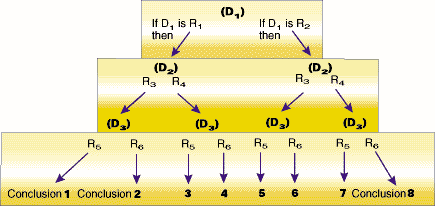ARTIFICIAL INTELLIGENCE
Modeling Human Learning
Applying Expert Systems
To Trading
by Wolf von Rönik
Artificial intelligence was introduced 50-odd years ago to model the way humans learn and extrapolate from the knowledge they glean. How can the theory of expert systems, one of the two current thoughts of artificial intelligence, be applied to trading?
In a broad sense, artificial intelligence (AI) is an attempt to model human learning and decision-making. In recent years AI techniques have been applied to a diverse number of activities, including trading. A number of trading software packages that traders can purchase today are based upon AI techniques.
Since its introduction in the 1950s, artificial intelligence has split into two camps - expert systems and neural networks. Although these two terms are often used interchangeably, they are distinct in their approach to modeling human decision-making processes and, therefore, in their applicability to trading.
WHAT ARE THE EXPERT SYSTEMS?
In its simplest form, an expert system is essentially a collection of data and accompanying if-then rules configured into the familiar decision tree (Figure 1). The decision tree begins with a node containing a data statement, labeled D1. The information in D1 is subjected to a pair of rules, denoted R1 and R2, in the following manner:

FIGURE 1: DECISION TREE. Here you see how an expert system works. Each branch contains a data statement and a pair of if-then rules.
If the data in D1 fulfills the criteria of rule R1, then follow R1's accompanying branch; if the data in D1 fulfills the criteria of R2, then follow R2's accompanying branch.
Each branch leads to another node containing a new data statement, at which point another pair of if-then rules causes one of the branches to be chosen, leading to another node containing new data, and so on until the chosen paths terminate in a conclusion. Note each path is a self-contained logic statement. For example, reading down the far left side of the tree in Figure 1 produces the logic statement if D1 is R1 and D2 is R3 and D3 is R5 then conclusion 1.
An expert system differs from a conventional computer program principally in that it solves problems by using knowledge that the system already contains rather than knowledge obtained through the implementation of a mathematical algorithm. For example, a conventional computer program would use an algorithm to determine the annual volatility of the Swiss franc, but an expert system would already have this information encoded in its knowledge base. This a priori information structure allows the expert system to successfully deal with problems for which no clear algorithmic solution exists.
...Continued in the March 2003 issue of Technical Analysis of STOCKS & COMMODITIES.
Excerpted from an article originally published in the March 2003 issue of Technical Analysis of STOCKS & COMMODITIES magazine. All rights reserved. © Copyright 2003, Technical Analysis, Inc.